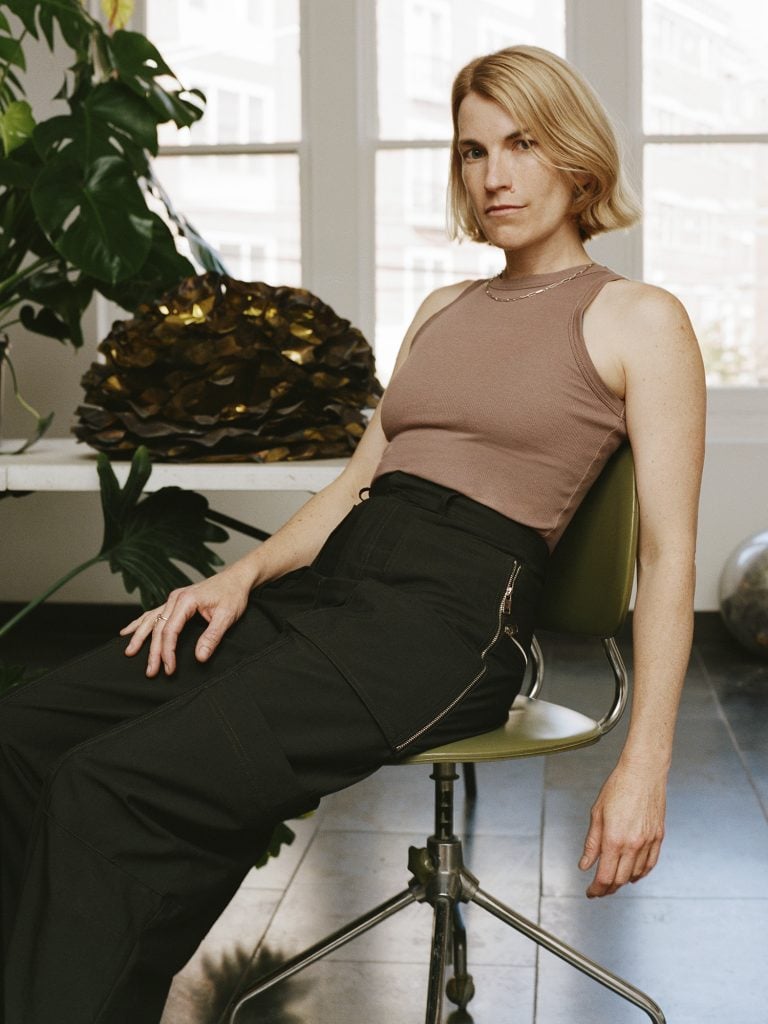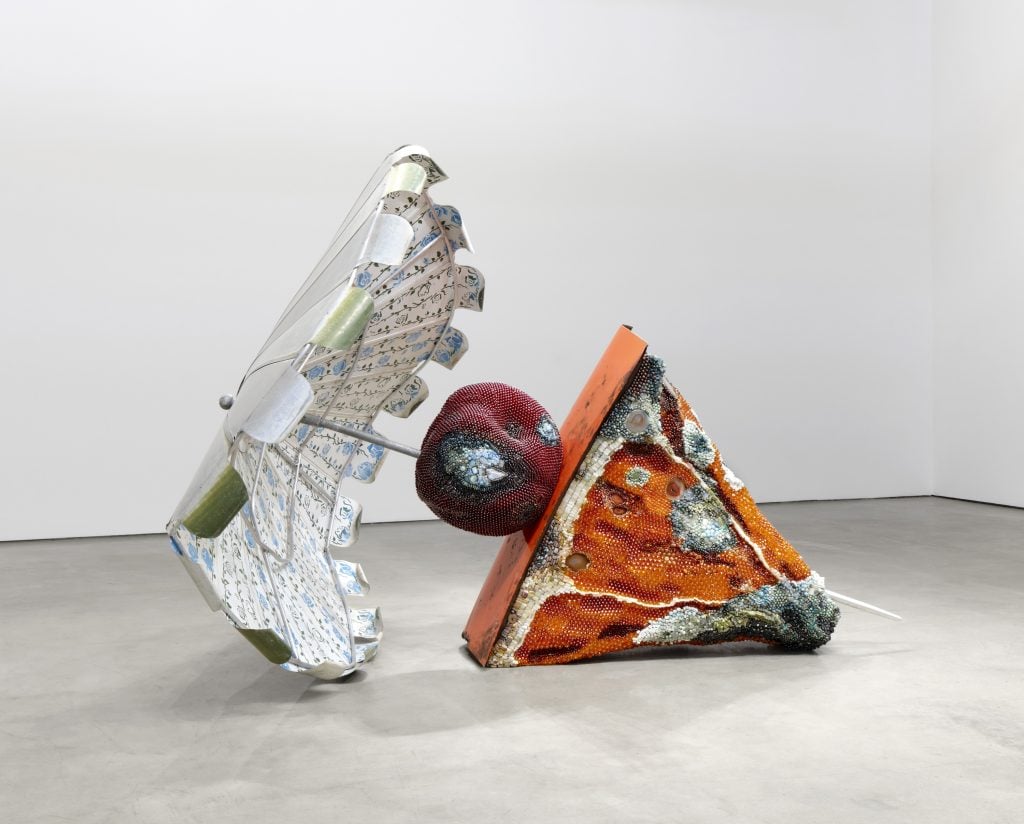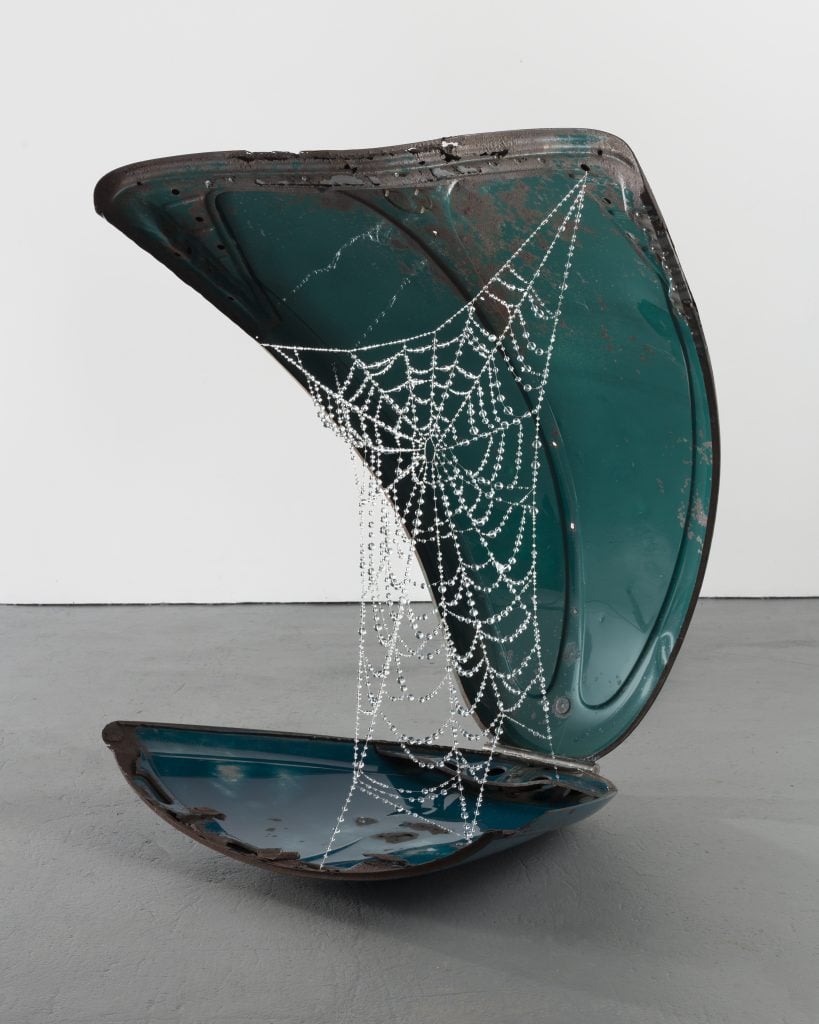Artists
Kathleen Ryan, Sculptor of Glittering, Rotting Fruits, Joins Gagosian
The American artist, whose vanitas-inspired sculptures meditate on opulence and degradation, will make her debut with the gallery in 2026.

Kathleen Ryan, an artist celebrated for her gem-encrusted sculptures of moldering fruits, is now represented globally by Gagosian, one of the largest galleries in the world.
The artist, who lives and works in New Jersey, has been crafting her meticulous, and often massive, bedazzled sculptures of everyday objects for over a decade. Wry and wonderous, the works are meditations on opulence and excess, seduction and revulsion, nature and artifice. Ryan’s debut exhibition with Gagosian is slated for 2026.

Kathleen Ryan, Screwdriver (2023). Courtesy of the artist and Gagosian Gallery.
Previously, Ryan has exhibited with François Ghebaly in Los Angeles, Josh Lilley in London, and Karma in New York (where she will maintain ongoing projects). Earlier this year, the Hamburger Kunsthalle in Germany hosted the first museum survey of her work, bringing together 30 sculptures from 2014 to the present, including specially commissioned work, and spider webs, fruits, and flocks of birds were among the sculptural subject matter. This survey will travel to Kistefos Museum, Jevnaker, Norway, in 2025.
The Institute of Contemporary Art San Francisco, meanwhile, is now presenting Spotlight: Kathleen Ryan a focused installation on a single sculpture Screwdriver (2023), in which the salvaged trunk of a 1968 AMC Javelin has been transformed into the rind of an orange slice as part of a larger-than-life cocktail garnish.

Kathleen Ryan, Generator (2022). Courtesy of the artist and Gagosian Gallery.
A California native, Ryan graduated with a BA from Pitzer College, Claremont, California, in 2006, and earned an MFA from the University of California, Los Angeles, in 2014. Her works tap a range of West Coast influences, from lush flora and fauna to muscle cars and bowling balls. But Ryan’s distinctive visual idiom also draws heavily from the vanitas scenes of Dutch Masters, in which canny depictions of rotting foodstuffs hinted at the precarity and brevity of earthly life. Much like these centuries-old oil paintings, Ryan’s sculptures often play with materiality and perception. Her work, Bacchante (2015), for instance, offered a sculptural reinterpretation of a 1627 portrait by Hendrick ter Brugghen, though Ryan transformed plump grapes on the canvas into concrete casts of balloons.
The artist’s most famous series, Bad Fruit (2018–) distorts the scale and significance of the American decorative craft tradition of pin-beaded fruit. These massive fruit sculptures, which often begin with a carved foam core base, are encrusted with glass and acrylic beads and semiprecious stone beads such as agate, garnet, and turquoise, to purposefully disorienting effect.
“Semiprecious stones stand in for bacterial growths and molds on the works’ craggy, mutated surfaces, making what should be their most repulsive aspects their most alluring,” wrote Tim Schneider for Artnet of Ryan’s exhibition at Karma in New York in 2021.

Kathleen Ryan, Bad Melon (2020). Courtesy of the artist and Gagosian Gallery.
Her more recent Generator series (2022–) transforms automobile bodies into oyster-like compacts that are veiled in crystal spiderwebs—mechanical and elegant and similarly uneasy.
In recent years, Ryan’s works have been a steady presence on the fair circuit, too. In 2022, at Art Basel Miami Beach, Artnet’s Katya Kazakina reported that Ryan’s work Beach Scene, featuring a pink parasol and semiprecious stones had sold for $175,000 during the VIP preview. In August of this year, Artnet reported that a decaying lemon sculpture by Ryan sold for $280,000 at Art Crush, the annual gala that benefits the Aspen Art Museum, during Christie ‘s-led auction. Another lemon, Bad Lemon (Slice of Paradise), by Ryan, priced at $110,000, meanwhile, had been named a top pick at Frieze Los Angeles in March by Liz Parks of Parks Art Advisory in New York.
“Three of five senses activated: I want to ogle, run my hands over, and sink my teeth into Ryan’s strange and decidedly un-juicy fruit gems,” said Park at the time, “Mold has never appeared so visually, touchably, and even mouth-wateringly delicious.”





